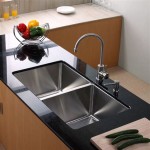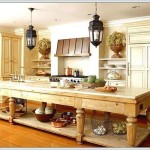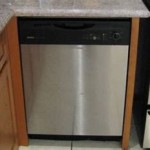Tile Types for Kitchen Floor
The kitchen floor is a high-traffic area, constantly exposed to spills, food debris, and heavy foot traffic. Therefore, choosing the right tile type is crucial to ensure durability, ease of maintenance, and aesthetic appeal. With a wide array of tile options available, understanding their unique characteristics and suitability for kitchen environments is essential.
Ceramic Tile
Ceramic tile remains a popular choice for kitchen floors due to its affordability, durability, and wide range of designs. It's generally made from clay and other natural materials, fired at high temperatures to achieve a hard, non-porous surface. Ceramic tiles are moisture-resistant, making them ideal for areas prone to spills and splashes.
Ceramic tiles are available in various shapes, sizes, and finishes, allowing for diverse design possibilities. They come in glazed and unglazed options, with glazed tiles offering more stain resistance and easier cleaning. While ceramic tiles are scratch-resistant, they can be susceptible to chipping or cracking under extreme impact.
Porcelain Tile
Porcelain tile is a denser and more durable variant of ceramic tile. It's made from finer-grained clay and fired at higher temperatures, resulting in a harder, more resistant surface. Porcelain tiles are highly scratch, stain, and impact-resistant, making them an excellent choice for high-traffic areas like kitchens.
Porcelain tiles are available in various styles, mimicking the appearance of natural materials like wood, stone, and marble. They are also highly versatile, suitable for both traditional and contemporary kitchen designs. While porcelain tiles are more expensive than ceramic tiles, their durability and longevity justify the investment.
Natural Stone Tile
Natural stone tiles, such as granite, marble, and slate, bring a touch of elegance and sophistication to kitchen floors. Each stone type offers unique patterns, colors, and textures, adding a distinctive character to the space.
Natural stone tiles are known for their beauty and durability, but they require greater care and maintenance. They are porous and can absorb stains, requiring sealing to protect them from spills and water damage. Natural stone tiles can also be slippery when wet, posing a potential safety hazard. However, their aesthetic appeal and timeless elegance make them a popular choice for those seeking a premium look for their kitchens.
Glass Tile
Glass tile offers a modern and vibrant aesthetic for kitchen floors. Its smooth, reflective surface adds a touch of elegance and creates an illusion of larger space. Glass tiles are highly resistant to stains and scratches, and their non-porous surface makes them easy to clean.
Glass tiles come in various colors, patterns, and textures, allowing for creative design possibilities. They are also environmentally friendly, often made from recycled materials. However, glass tiles can be slippery, and their delicate nature requires careful installation and maintenance.
Engineered Stone Tile
Engineered stone tiles, such as quartz and engineered marble, combine natural stone with resin or other materials to create a durable and aesthetically pleasing surface. They offer the beauty of natural stone with enhanced durability and lower maintenance requirements.
Engineered stone tiles are resistant to scratches, stains, and heat, making them suitable for kitchen environments. They are available in a wide range of colors and patterns, mimicking different stone types. While slightly more expensive than natural stone tiles, engineered stone tiles offer a balance of affordability and high performance.
Factors to Consider When Choosing Kitchen Floor Tiles
Beyond aesthetics, several factors should be considered when selecting kitchen floor tiles. These include:
Durability and Resistance
Kitchen floors are subjected to heavy foot traffic, spills, and potential impacts. Choosing durable and resistant tiles like porcelain, engineered stone, or even natural stone ensures long-lasting performance and prevents damage over time. Consider the level of wear and tear expected in your kitchen and choose tiles that can withstand those conditions.
Maintenance Requirements
Different tile types require varying levels of maintenance. While ceramic and porcelain tiles are relatively easy to clean, natural stone tiles need regular sealing and cleaning to prevent staining and damage. Glass tiles, despite their non-porous surface, can be prone to scratches and require careful handling. Consider your maintenance preferences and choose tiles that align with your lifestyle.
Style and Design
Kitchen floor tiles should complement the overall design aesthetic of the space. Consider the existing décor, cabinetry, and countertops when choosing tile colors, patterns, and textures. From sleek and modern to classic and traditional, there are tile options to suit every style preference.
Budget
Tile prices vary widely depending on material, size, and brand. Set a budget before shopping for tiles and explore different options within your price range. Consider the long-term value of durable tiles that can withstand the test of time, even if they come with a higher initial investment.
Ultimately, choosing the right tile type for your kitchen floor involves a combination of factors. By considering durability, maintenance requirements, style, and budget, you can select tiles that enhance the functionality, beauty, and longevity of your kitchen space.

Best Tile For Kitchen Floor How To Make The Right Choice Welcome Rubi Tools Blog

Ceramic Tile Kitchen Floor Pros Cons And Best Designs Stone

Five Types Of Kitchen Tiles You Should Consider

All You Need To Know About Kitchen Flooring Design Cafe

15 Different Types Of Kitchen Floor Tiles That Combine Functionality And Style

Buy Modern Kitchen Tiles Design For Wall And Floor

Different Types Of Flooring Kitchen Or Bathroom 3rs

Top 10 Kitchen Floor Tiles Trends 2024 Stone Tile

Which Types Of Tile Are Best For Kitchen Flooring

Kitchen Floor Ideas For 2024 Checkatrade
See Also








